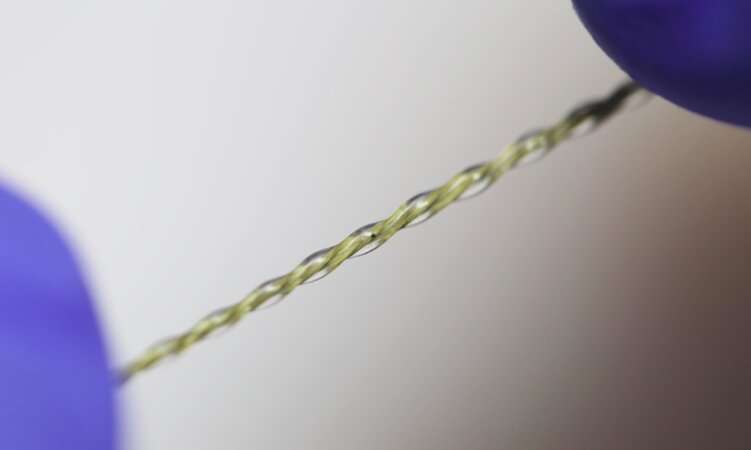
Implantable electronics are among
the most promising healthcare technologies, as they can help to remotely
monitor specific biological processes associated with a patient's health. While
researchers have developed a variety of implantable devices over the past
decade or so, existing technologies have several limitations that can prevent
their widespread use in clinical settings.
The first factor preventing the large-scale implementation of existing implantable technologies is the structural mismatch between these devices and most organs/tissues in the body, which typically have complex 1D or 3D structures. Secondly, reliably fixing soft electronic devices on organs that are moving or pulsating has so far proved to be highly challenging.
Researchers at Daegu-Gyeongbuk Institute of Science & Technology (DGIST) in South Korea and ETH Zürich have recently developed a new fiber-based strain-sensing device that could overcome the limitations of existing implantable electronics. This sensor, presented in a paper published in Nature Electronics, comprises a capacitive fiber strain sensor with an inductive coil for wireless readout.
"The main objective of this work was to overcome the practical limitations of existing implantable electronic devices," Jaehong Lee, one of the researchers who carried out the study, told TechXplore. "To achieve this, we developed an implantable electronic device (specifically, a wireless strain sensor) made of suturable fiber, which significantly improves the structural mismatch of existing planar implantable devices and fixation issues."
The strain sensor created by Lee and his colleagues is made of two conductive fiber electrodes placed within a double helical structure with a hollow core. When a tensile strain is applied to the two fibers, they straighten, which changes a specific electrical property of the sensor (i.e., its capacitance).
"We can monitor the applied strain by wirelessly measuring the change in capacitance of the sensor," Lee said. "Based on the hollow core in the sensor, the double helical conductive fibers can be rapidly straightened out under the tensile strain, achieving a higher sensitivity than that of existing capacitive strain sensors. More importantly, the strain sensor in this work can be directly sutured itself onto target tissues or organs based on its unique structural advantage, which provides a stable fixation for long periods of time."
Lee and his colleagues evaluated their implantable sensor by running a series of mathematical analyses and simulations. They found that the device performed remarkably well. Moreover, its performance could be modulated or adapted to meet the needs of specific applications.
The sensor developed by this team of researchers could help to overcome the main practical limitations of existing implantable devices (i.e., structural mismatch and stable fixation). In contrast with other solutions developed in the past, in fact, this new device could be directly sutured onto target tissues or organs.
In the future, this recent study by Lee and his colleagues could thus inform the development of more efficient and reliable electronics to monitor specific biomechanical signals inside the human body. For instance, the researchers' device could prove valuable for personalized rehabilitation in orthopedic applications and for examining sport-related biomechanics.
"To the best of our knowledge, this is first demonstration of a suturable electronic system for biomedical applications and we believe that this will be a large step towards clinical applications of implantable electronic devices," Lee said. "As a next step, the sensing system should be made bioresorbable, to remove the requirement for a second surgery to remove the implanted device after use. Therefore, we are now working on advancing the fiber-based implantable sensor to a fully bioresorbable system."

 Previous page
Previous page Back to top
Back to top







